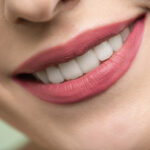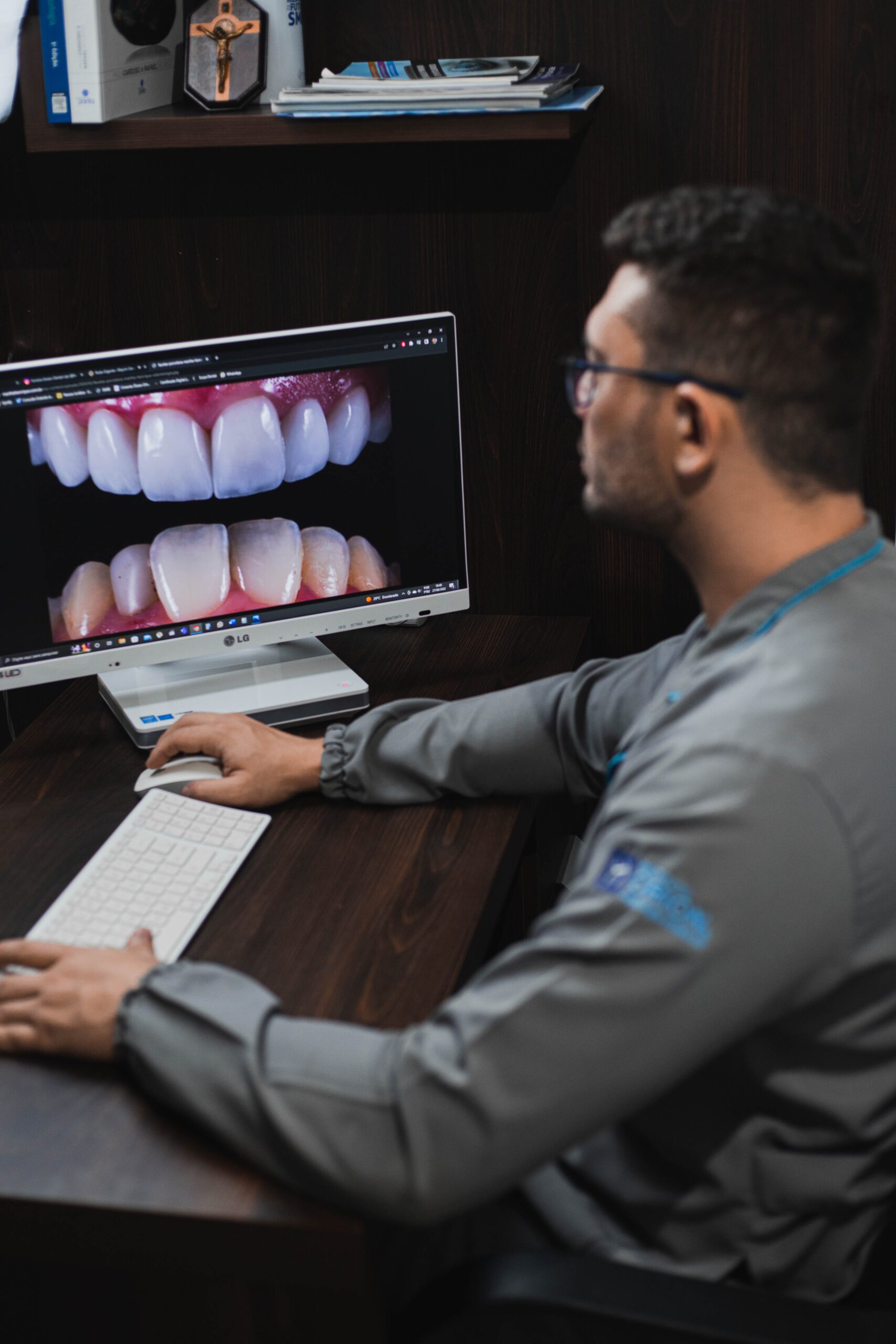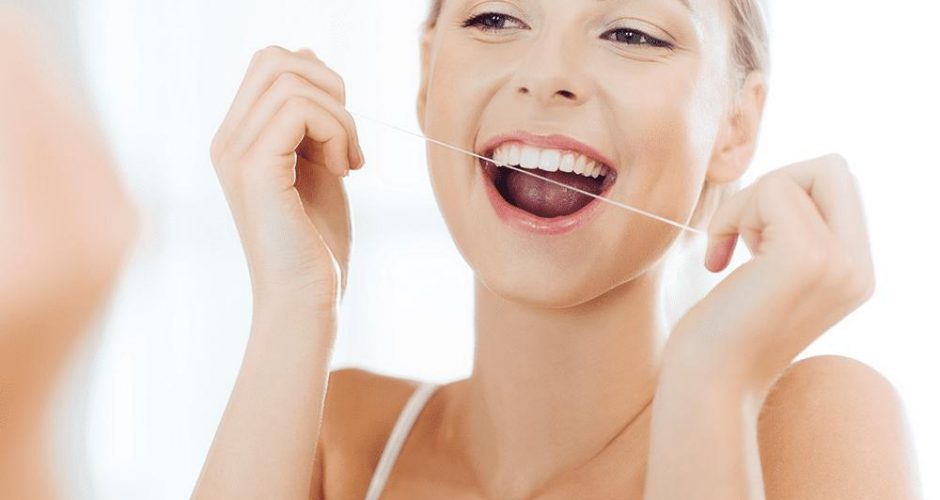
Are Veneers Right for You?
June 14, 2022
How Long Does a Root Canal Take?
February 2, 2023No matter how thoroughly you brush your teeth, reaching all the plaque and food debris that reside under your gum line and between your teeth is impossible. This is where flossing comes in. In this guide, we’ll highlight why flossing is so important, how to floss properly and what types of floss might be best for you.
Because we can’t possibly see all the little bits of food and plaque between our teeth, flossing can help us keep our smiles clean and healthy. Even if you brush twice a day for two minutes each session, ignoring the spaces between your teeth can harm your dental health over time. Flossing helps you remove plaque and food between your teeth, which will in turn prevent gingivitis, cavities and periodontal disease.
Here’s the list of the most common questions about flossing and the topics we’ll be covering in this blog post.
Table of Contents
[Related: The Difference Between a Manual vs. Electric Toothbrush]
Using dental floss can prevent gum disease and tooth decay because it stimulates the gums, polishes the tooth surfaces, prevents plaque buildup and reduces bleeding gums.
Flossing Can Prevent Periodontal Disease
A study by the Journal of Dental Research reports that more than half of the population has gum disease (aka periodontal disease) that more flossing could prevent.
Periodontal disease is a fairly common condition that can lead to:
- Results as minor as tooth loss
- As serious as a heart attack or stroke
Periodontal disease can be one of two types:
- Gingivitis (the less serious of the two and is more common)
- Periodontitis
Bacteria and inflammation cause periodontal disease. If plaque (made up of bacteria, food particles and mucus) builds up on your teeth and isn’t brushed away, it hardens into tartar (calculus), which can happen in as fast as two days. When tartar gets stuck on your teeth, you can’t brush or floss it away on your own.
[Related: Periodontal Disease and Cardiovascular Health]
The bacteria in plaque and tartar prompts inflammation of the gums, which causes the gums to pull away from the teeth and form pockets that fill with more tartar and bacteria.
As the bacteria grows, inflammation can spread to the ligaments and bone that hold your teeth in place. Once that happens, you officially have periodontitis.
Research suggests the bacteria growing in your gums can enter your bloodstream through the gum tissue and then circulate through your body to your heart, lungs and other critical organs.
How To Floss Properly
Luckily, practicing a good flossing routine can drastically decrease your chances of developing periodontal disease and keep your gums and teeth healthy.
It’s one of the most effective habits for plaque removal between teeth.
Should You Floss Before or After Brushing?
One question comes up again and again: Should you floss before or after brushing?
Although it may sound backward, studies have proven that flossing before brushing is more effective at removing plaque.
Flossing loosens bacteria, plaque and other residue. When you follow with brushing and rinsing, you can flush out more particles from hard-to-reach spots in the mouth.
[Related: Causes and Consequences of Teeth Grinding]
How To Floss Your Teeth
To get the most out of your flossing session and remove as much plaque and debris as possible, you need to make sure you’re flossing properly. If you wear braces, check out our detailed guide on how to floss with braces for step-by-step techniques and tool recommendations.
Here’s what we suggest:
- Gather about 15 to 20 inches of floss and wind it around your middle finger on each hand, leaving a couple of inches in the middle to floss with.
- Slide the floss gently between your teeth.
- Curve the floss into a “C” shape around each tooth and gently move it up and down.
- Be sure to go below your gum line without excessive force.
- Use a new section or a fresh piece of floss as plaque and food debris build up. Be sure to hold the floss tightly between your fingers as you gently guide it along the sides of each tooth.
[Related: How To Floss With Braces]
Tip: Don’t over-floss. Avoid flossing more than once or twice per day, unless you’re trying to remove a piece of food from between your teeth. Over-flossing or flossing too forcefully can damage your gum tissue and destroy your gum line.
What To Do If Your Gums Bleed When Flossing
If your gums are red and inflamed, you may see some bleeding when you floss. However, if you continue your daily routine of flossing and brushing properly, the bleeding should stop after a few days. Your gums will look pink and healthier.
[Related: How to Deal With Minor and Major Tooth Pain]
Types Of Dental Floss
Did you know you have options when it comes to floss? Once you realize this, the choices can seem overwhelming. We all have different spacing between our teeth and different gum sensitivities. You should choose the type of floss that goes easily between your teeth, does its job and doesn’t feel uncomfortable.
Here are a few flossing options to keep in mind when choosing dental floss.
1. Unwaxed Floss
Unwaxed floss is thin nylon floss.
It fits into tight spaces if your teeth are close together, but it can be prone to shredding or breaking.
2. Waxed Floss
Waxed floss is a standard nylon floss with a light wax coating.
It’s less likely to break, but the wax coating may make it more difficult to use in tight spots. Waxed floss tends to be the best waxed dental floss option for people with braces or dental appliances because it glides easily and resists fraying.
3. Dental Tape
Dental tape is broader and flatter than standard floss and comes in waxed or unwaxed versions.
People with more space between their teeth often find dental tape more comfortable than standard floss.
4. Polytetrafluoroethylene Floss (PTFE)
Compared to other floss types, PTFE floss slides between the teeth easier and is less likely to shred.
[Related: How to Whiten Your Teeth]
5. Super Floss
Super floss is made from yarn-like material. It has stiffer sections on each end that you can use to clean around braces or dental bridges.
6. Expanding Dental Floss
Expanding dental floss is designed to remove plaque from the hard-to-reach areas between teeth that have larger gaps while also cleaning regular spaces.
The floss expands during use to form a larger-diameter string that contacts more surface area around gaps.
7. Dental Flossers/Floss Picks
Dental flossers, also known as floss picks, come in a fork-shaped handle to allow people with arthritis or limited grasp to floss their teeth easily and effectively. Nonetheless, it’s not as effective as thread floss.
8. Waterpik
Waterpik is a brand of water flossers or oral irrigators.
These tools spray water at targeted areas in the mouth to remove food from between your teeth. These are great options for people who may have difficulty with traditional flossing.
Contact Cascadia Dental Specialists Today!
In conclusion, maintaining optimal oral health is a key aspect of overall well-being, and regular flossing plays a crucial role in achieving this goal.
Additionally, for those keen on embracing innovative dental tools, don’t miss out on our insightful blog post on how to use a water flosser effectively.
For more information and advice on flossing, visit your Bellevue, Washington, dentist or contact Cascadia Dental Specialists today to make an appointment for your regular exams and cleaning.





